This book is a mixed of I'm showing you my tiny home, get ideas for a tiny minimalist home from me and my pals, and let's do some pretty DIY.
WHAT I LIKED
> The edition of the book is awesome. Wonderful photos and illustrations, DIY tips and ideas.
> The book is clearly and simply written and well structured.
> This is a good startup guide if you want to live in a tiny house or just have a tiny home and want to take advantage of any space available. There are many ideas and tips that I can see adopting in my place, even though my home is average, not tiny.
> I think this book can be really useful to renters, like me, who sometimes struggle to use a small apartment to its potential.
> I love the overall Boho decor, the mix of neutral tones and white, the airiness and lightness of the spaces, the basketry and pot plants and very much everything.
> This is a good repository of ideas that I can use to update a small property. Many of the ideas are simply cute and very practical and can be implemented in tiny or not tiny spaces.
WHAT I DIDN'T LIKE
> If you watch tiny-home videos & blogs on the Internet, you'll have the tips and ideas in this book ready available. In other words, nothing new on the horizon.
> This book seems targeted to a young crowd, some things like loft upstairs would be a problem for some people with disabilities, knee problems or if you have a broken leg.
> The space is great for singles or young families; if your children are in their teens, not sure whether this tiny place ideas would need of an overhaul.
> The Boho style might not resonate with everyone.
> The studio and home office section is really underdeveloped.
-- Yes, for sure we can do most things from our laptops nowadays we can have a hole library on Kindle or digital format, but many of the things the author says apply to her and her life and I don't think represent many people who actually work from home and need way more stuff than a laptop in their tiny home.
-- Taken, we all, me especially, have a thing for pretty stationery and have too many pencils, pens, markers, or whatever, so we can all reduce the junk.
-- Now, what about if your work from home involve doing some craft or photographing things you make, or painting on paper? Just to name some obvious things.
-- Ditching the office chair is just a bad idea if you spend 8 hrs working at home, because I've been there and that killed my back.
-- Re ditching the printer, that's another not so good idea. It's great aiming to something that is small and that can be concealed. However, if you need to print A4 paper, there is a limit to the smallness. Also, why would I ditch my printer to go and print some pages to the local library, when, if, I did that, I wouldn't have the freedom to print many pages at my own time without having to take the car or public transport to go to a local library to get 2 sheets of paper printed; like it takes 5 minutes to switch the printer on and print 2 pages; how long would take me to go to my local library? Way more. What about if I need to print something on a Sunday. Like a basic good quality printer is actually super cheap and you can store it anywhere.
-- Some professions require of reference materials or specialized books that aren't always available on digital format. I can borrow them from my local library or purchase them, but those are going to be on my studio and are often a few.
> The author says in the Introduction that she's not minimalist or part of any movement, but her home and tips all lean towards minimalism and her home is definitely tiny.
POOR DIGITAL EDITION
> The lettering contrast is deficient in some parts of the book, too faint to be comfortably read on on my 15"-screen laptop at 100% resolution. It's only possible to read it without squinting when I use 150% or full-screen mode.
> The font size is overall too small to be comfortably read without magnifying to 150% or full-screen mode.
> The table of contents don't display on the side bar.
> The Index of Contents is not linked to the content area.
> No bookmarks possible in this edition, which certainly defeats the purpose of having so many tips on each page that I would like to bookmark for future reference.
> Due to the previous issues, the book is not practical or much usable on Kindle, so I'd rather have it on hard copy.
IN SHORT
OK book. Nothing new on the horizon of tiny homes. Pretty photos and cool ideas. One of those few books that I'd like to have on hard copy.
This book grew on me from the first pages, when I quite disliked it, to when I finished, which I really liked it. This isn't a tutorial kinda book, it's a book to harness your intuition for artistic purposes and give you tips, prompts and techniques that will translate that into your paintings.
I DID LIKE
>>
The lovely design and style of the book, from the lettering to the
doodles incorporated into the pages to the gradient boxes with the
exercises. The book has high quality full-color reproductions, too.
>> Some of Bowley's artwork displayed on the book.>.
The technique prompts in the first chapters of the book are excellent,
especially for beginners and something that I haven't seen in other
teaching Art books. Prompts cover the use of water spray bottles,
fingers, rags, etching, stamping, and small brushes and foam brushes. I also loved the tip on how to create a glass palette
>> Bowley provides us with a great selection of exercises to harness our intuition for artistic purposes. This is actually the best part of the book and something I haven't found in other Art books out there. We're given tools on how to approach a painting, how to go through the hurdles when we get stuck, how to finish a painting, when should we finish it, and how to create from our inner voice.
>> The fact that Bowley advises us to ask ourselves 'what's working' (instead of what's not working) when we're stuck or when a painting isn't working.
>>
How simply but effectively color theory is explained in p. 59 and the
examples of which color combinations create/don't create mud in p. 69.
>> The Taking
Stock section on page 120 contains 13 questions for us to ask ourselves before deciding whether a painting is finished or not.
SO-SO
>> " Remember, only you can paint like you". (Page 112).
-- This isn't totally true. There are people painting The Monalisa like Da Vinci at the dozen in China and they're really great. Also, remember the forfeiting paint industry, which needs of super-qualified experts to distinguish the original from the copy.
>> The Blindfolded finger painting exercise is fab, but what about if we don't paint on canvas and use A4 or A3 watercolor paper instead?
>> "Make sure you always have at least two canvases in progress at all times (...) as it allows one canvas to dry as you work on the other." (Page 66).
-- Not sure if this is valid for paper either.
>> "It’s tempting, and very natural, to want to know what your paintings are going to look like before they are finished, but the truth is you never really know what the future holds. Incredible amounts of energy are wasted by chasing what you cannot catch." (Page 28).
-- I see this sort of statement repeated everywhere these days but it doesn't ring 100% true to me. Many artists and art masters in the past have painted and paint on commission and within strict guidelines, or like to produce whatever final product, like a realistic portrait of the Queen, just to mention something. I don't think that all artists let their creativity go wild.
>> Bowley's paintings in the book aren't named or dated.
I DIDN'T LIKE
>> The book has 129 pages, but the written part of it covers half of the book. Many pages contain full-page photos, most of the others have half-page photos and 1-2 columns of text or 1 exercise boxes.
>> Too many quotes, covering half page. I like them, but, are they necessary? No!
> The positive-thinking New-Age Law of Attraction spiritual philosophy that pervades the book. It's like something I've read gazillion times in other places for other purposes. Ready-made sentences that mean little to me. Not every painter is spiritual. Not every painter who's spiritual is into New Age or yoga or whatever. You can be a good teacher and be agnostic and in a wheel-chair. You know what I'm a saying?
> Relax by taking a bath... I haven't seen a bath in urban rentals in the huge city I live in for decades. Not even in many of the newly-built small houses.Having a bath is like a fantasy these days, like a luxury, but the sentence comes up so often together with relax that's annoying.
>> "Human aliveness is inseparable from creativity. We are all artists already… each and every one of us." (Page 13).
-- I don't agree with this. We are all creative and creators for sure, not all of us are artists. Not every painter who lives out of their sales is an artist either. I think there are not many true artists around these days.
>> The About
the Author section at the end of the book is vague/generic, and says that Bowley has works published in books, albums and in paintings in galleries.
So, which galleries, which albums and which books? It reads more
like a FB, Amazon or Fivver profile trying to impress customers than something fit for a book bio. In fact,
Bowley's profile elsewhere is more specific and mentions just books not galleries or albums. Vague biographies rest credibility
to any author. Also, I would have loved knowing whether Bowley studied
Art in Art School or a self-taught painter.
TYPOS
Overall the book is well edited, but I noticed, on page 117,the following:
"If you premeditate on using a word before you’ve started your painting, you run the risk of your words seeming contrived. ask yourself whether your words feel forced, or whether they are a natural extension of your process?
Notice that ask should be in capital and that the interrogation mark is unnecessary in this sentence as it's phrased.
Despite the years elapsed since this book was first published, True Vision is still the book I'd recommend to people to start with if they're new to mixed media, art journaling or both. This work was first published in 2008 and the Kindle edition I used to read is from 2011; yet, it's the most compressive work I've found for art journaling while being authentic to who you are, without copycatting anyone. I find the book both inspiring and helpful.
THE STRUCTURE
The book is structured in chapters evolving about different journaling themes, which Ludwig analyzes extensively: The written word, relationships, currents events, places and spaces, self-explorations, spirituality and dreams. Each chapter contains information about how to explore the theme as well as sections devoted to techniques, visual and journaling prompts, as well as intermezzos with interviews with different art journalists.
>> The Visual Toolbox sections make you learn new techniques
and/or increase your proficiency level in art journaling. Some of them were borrowed years later by other more popular
art journal artists, like Dina Wakley. These techniques are: Making a stencil portrait. --
Text onto metal mesh. -- Writing with fluid acrylics. -- Adding
Structured Texture to an Art Journal Page. -- Silhouette figure study.
-- Altering a child's board book. -- Faux landscape painting. --
Photographic self-portrait. -- More than the sum of our parts. --
Ink-jet transfer. -- Patina on paper. -- Blind contour drawing. --
Carving a self-portrait into a printing block. -- Altering scrapbook
papers.
>>
The Insight Activity sections describe some techniques to journaling and filling a journal page: Unblanking the blank page. -- Using
your best stash items. -- Automatic writing. -- Creating and using a
vision deck. -- Creating an imaginary musical alphabet. -- Using old
notebooks as a substrate or collage element for your artwork. --Using
poems. -- Creating versions of the same item (circumstance, day,
happenstance). -- Creating a page that summarizes your week. -- Creating
abstracts. -- Being a tourist in your own town and using using the
experience to journal. -- Building our sense of home. -- Using dream
characters to create pages.
>> Take a Closer Look is where Ludwig interviews other artists whose journals fit the theme under examination: Bee Shay, Nina
Bagley, Traci Bunkers, L. K. Ludwig (herself), Juliana Coles and
Loretta Marvel. Many more artists are mentioned throughout the book, and
their art showcased, to exemplify what's being taught.
>> The appendix contains the Vision Deck for printing, a list of contributors (names, websites and/or email addresses), and a list of resources (art supplies, books and magazines as well as artists to look up).
THE GOOD
>> Despite the many years elapsed since first written,
the book has aged well and is still relevant and my first recommendation for anyone wanting to start journaling or improve their journaling.
>> Beautifully designed book, from the color palette (which changes from chapter to chapter) to the flourishes, the font type and sizing, as well as the overall layout. It is a very stylish book. Everything is just well thought and visually rendered.
>> Excellent photo quality and sizing. The images almost feel 3D.
>> Ludwig not only tells you how to journal and about what subjects, but also gives you tools and techniques that allow you to journal and to grow as an artist.
>> I find some of queries at the bottom of each section not only good for journaling but also to know thyself.
>> I love all the attention devoted to dreams as source of inspiration for journaling, especially because Ludwig has a clear Jungian and Gestal approach.
>> Most of the small tip boxes are really helpful and great. Like, they aren't obvious things.
>> The Interviews with other artists whose artwork isn't appealing to me. Yet, they also provide with invaluable feedback on different people's creative process.
>> I don't see the need of constant quoting. If you have to say anything, just be brave to own your own opinions. I confess that some of the ones chosen here supplement the idea under discussion well and they aren't the usual quotes repeated everywhere either, so that's OK. Yet, I don't like constant quoting.
>>The Photographic self-portrait visual toolbox is good but seems redundant
in this Selfies Era.
>> In this overwhelmingly age of the image, I miss a photo-by photo tutorial of the Visual Toolbox section. Ludwig describes the steps clearly and concisely, but I'd rather have a photo tutorial.
>> The
prompts vertically written on the right hand side of some pages are very
difficult to read if you're using a digital copy unless you totally
twist your head. They're great, so I've copied them at the bottom end of
this review.
>> Some of the prompts asking about things that happened when we were in second grade or very long time ago. Unless you have a savant memory, it's difficult to remember what happened unless you're picking up the book, say, in High School.
>> The book ends abruptly without conclusion or final words.
- >> Usurp an ordinary object for artistic purposes—a fork, perhaps. Bend the outside tines into a loop until they touch the fork, then spread the two middle tines apart. Is this a fork or a flower? Anything can be used. Think beyond the ordinary.
- >> Use serendipity. When something you read or experience dovetails with important things in your life, use it as topic about which to create. Messages from the universe should not be overlooked!
- >> Start out on one subject and wend your way around to another completely unrelated topic using a series of images copied to the same size. Start somewhere and end somewhere else.
- >> Map your path to work, the coffee shop, or the grocery store. Create an actual map, by drawing doodles of buildings, landmarks, squiggly trees... Make the scale how long it feels to get to a place, not the actual distance
- >> Place 4” (10 cm) squares of white, cream, and gray paper in a well-lit room. Notice how the light affects the colors as it changes over the course of the day. Try replicating these effects in your journal using watercolors.
- >> Empty an anxious heart onto your pages. Clip, paint, snip, scribble, splatter, write. Don’t consider the appearance of your page, just release your burden onto the paper. If this isn’t a page you want to commit to having in your journal, do it on scrap or deli paper.
- >> Take an old book from your hoard to use as a new journal. Instead of using it the way it opens, turn it 90 degrees and use it from that direction
- >> Turn up the volume: go for brighter versions of the colors you were going to use. Whatever you were going to do, do it bigger. Spill it off the page. Make it so big as to be unrecognizable. Make it so loud in color that anything else is hard to see, or so black that it could be a cave. Bigger, bolder, more volume!
- >> New journals can be daunting. Break in pages by dipping the book into a bowl of coffee, tea, or watered down ink. Hold the book by the cover boards to dip. Fan open to dry.
- >> Glue an envelope to a journal page. Write a love letter to someone, perhaps yourself, tuck it inside and seal it shut.
- >> When using text on a page, give it visual punch by creating words that jump off the page through their arrangement, color, or style.
- >> Find one image or object that is the quintessential distillation of someone or some place you cherish and create a page that supports the image or object.
- >> Make a photocopy of your palm. Head to the library and look up palmistry. Give yourself a palm reading and Create a page about what your palm has to say. Are secrets there?
- >> In second grade, what did you want to be when you grew up? What other things did you want to be when you grew up? Have you done any of those things? Do you still want to do any of those things?
- >> Try on different handwriting styles.
- >> Construct a page that interacts with the viewer. Try pull tabs, flaps, and small doors.
- >> Prove you exist.
- >> Collect doorways, or rather, images of doorways. Thinking about the nature of doorways can lead into some interesting journal work.
- >> Tear a piece of newspaper or tissue into rectangles and strips. Adhere these pieces to your page with acrylic medium. For additional texture, crumple the pieces before attaching them.
- >> Coat a page in wax and scratch marks or text into the surface. Rub graphite or charcoal into the scratches.
- >> Folding pages adds new perspectives. Fold before starting, to create separate spaces. Fold after, to create texture and dimension.
- >> Save your doodles. You can enlarge and copy them to create interesting backgrounds.
- >> Vagary. Despite its naughty sound, a vagary is a whim, an odd or eccentric idea. For one week, collect all your odd ideas, not just those that are art-related. Now choose one, two, or more and make pages about them
- >> Gravity. Use it. Spill coffee or paint onto a page, even one in progress.
- >> Create a visual joke, something that makes you smile each time you see it.
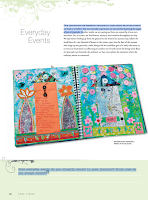.png)
.png)

As the title reveals, this is a book written to showcase the creative process and teachings that Alena Hennessy follows with her students on the online program A Year of Painting. I'm sure that the online workshop is fun and encouraging, but since I'm reviewing the book, I can only say that I'm happy that the book was handed on to me and I didn't spend any money on it.
The book is structured following the four seasons. There is a seasonal checkup with journaling prompts and suggestions, activities and ideas for each month of the year, plenty of quotes, artwork by the author and her students as well as a detailed tutorial for each month.
GOOD THINGS
> Very pretty book edition overall and no typos or odd things on view.
> I love some of the naif paintings showcased throughout the book.
> Good quality photos.
> Greatly photographed step-by-step tutorials, which are great for beginners.
> Easy to follow tutorials even for people who have not much experience painting or with mixed media.
> The suggested list of materials is short and sweet. The reader won't feel overwhelmed by the demand for huge stash or super-duper specialized products.
> The Journaling prompts on the seasons check-up section are great.
> Hennessy's comments on the beginner's' mind, on putting in the work and the hours, and on holding back the inner critic in us are all good advice. >
"Certainly don’t feel bad if you want to mimic a work you see—you will
still make it your own and your style will grow stronger with time.
(Page 8)." I think this valid for beginners and it's brave for her to say it. It's not about copycatting
anyone style/voice but about practicing techniques and experimenting having
an end in mind. For sure, it won't help you find your creative
voice, but it will get your hands loose.
> Basic glossary of art terms.
> A traditional index at the back.
NOT SO GOOD> Not a good book for intermediate or professional painters. Like, it's too basic. It feels more a book targeted at craft painters than anything else. I think this is also highlighted by the overall quality of the artwork showcased in the book.
> Some of the monthly and seasonal projects are totally unimaginative, uninspired and even childish. Like create a work of art about love in February for St Valentine's, or a holiday theme for Xmas in December, or paint Spring flowers in Spring or Summer flowers in Summer.
> After each tutorial, there are several artworks from Hennessy's students showcased to further inspire the reader on the suggested theme. Yet, in many cases those pieces don't relate at all or very vaguely to that theme.
> The author says "This book is a bit different than other how-to painting books out there. It is inspired by my popular online course, A Year of Painting, and includes the work of many of the wonderful artists who participated in the course, so you’ll receive an array of approaches and styles as examples for each monthly lesson." (Page 8). That's quite pretentious and not true, at least in year 2023, when there are gazillion art books inspired in online workshops showcasing students' artwork.
> "If you are an experienced painter, allow this book to get you to try new things within your own style. My experience is that it can only deepen a portfolio and add to your creative toolbox. (Page 8)." Also pretentious. If you're an experienced painter, you don't need to open this book, you know more than the author.
> The Art Terms, i.e. the art glossary, is located at the beginning of the book and not at the end, which is a commonplace in edition. Many readers won't certainly need it while others will definitely do. This being the case, placing the glossary at the end makes even more sense.
> The "What You need" sections at the beginning of each tutorial have, at least in the digital edition, way bigger font than the text accompanying each month prompt and the tutorial written steps.
> Over-presence of 'paint flowers' suggestions and artwork. I love the theme, and I get that this is part of Hennessy's thing, but I would have also loved a bit of more variety.
> In the March prompt Hennessy says "The experienced artist will also enjoy this lesson for it allows us to “paint” with paper—not something commonly done by painters.(Page 41)." That's utter nonsense.
> Advising being intuitive while telling you how to follow a tutorial and make a painting that represents who she is, it is just counterintuitive. There are not hints on how to work with your intuition, especially in a book that follows the seasons and is quite linear and uninspired.
> The structure of the months follows the Northern Hemisphere not those of the Southern Hemisphere. So Xmas and Summer go together there, but this isn't considered.
> Too many unnecessary quotes that add barely anything to the book.
It's a OK book for beginners. One of the many naif art books out there with nothing original that you cannot learn elsewhere, on YouTube for example. Overall, I find it amateurish and a bit pretentious, but also useful for craft painters and people who have never tried mixed media. I have no doubt
that the online course is way more fun. You can look up the author name on YouTube and find some of her tutorials. See if it's your cup of tea and whether the book is for you or not.

















.png)
.png)
.png)
.png)
.png)
.png)
.png)
.png)
.png)
.png)

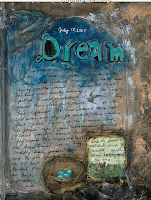.png)
.png)
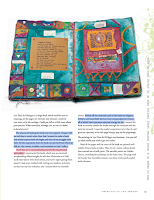.png)
.png)
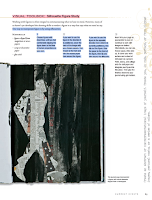.png)
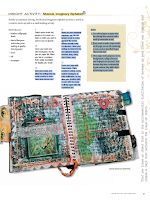.png)
.png)
.png)

.png)
.png)
.png)
.png)
.png)
.png)